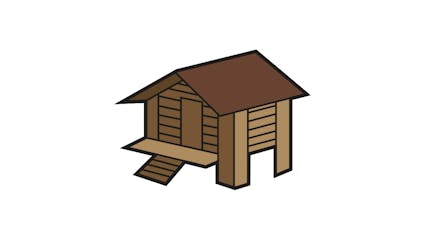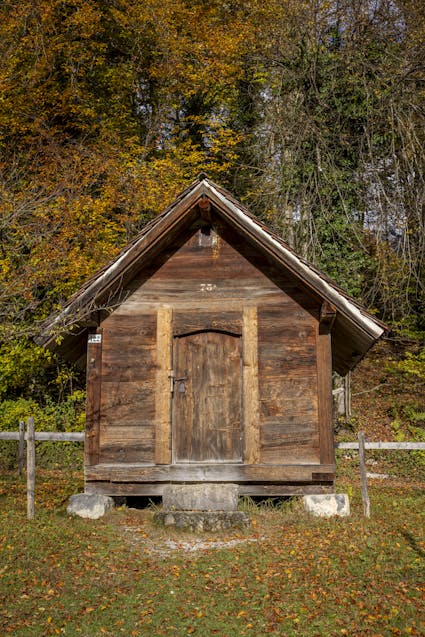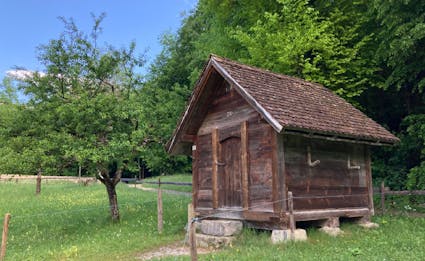122 – Granary from Montsevelier, Jura, around 1900
The big decorated storage buildings of the rich farmers of Berne and Lucerne are familiar, as are the small but spectacular granaries from the Valais with their stilts and stone-slab mouse-barriers. In contrast to the larger and decorated storage sheds in the Jura of the 17th and 18th centuries, this one is small and inconspicuous. This granary stood right in the village of Montsevelier and is a timber frame structure with neither decoration nor inscription. It is only three metres by three (ten feet by ten).

Well Built
If a building is built just any old way, the consequences can be bitter. The granary from Montsevelier stands on stone footings in order to gain clearance over the ground. This kept things dry and kept the stored grain from spoiling. It was located near the farmhouse so that thieves could not enter unnoticed. The farmer’s reserve supplies and his valuables were kept there. The granary could neither be right next to the house nor downwind of it because of the danger of losing everything in a fire.

How do you store grain?
Grain must be stored dry and out of the reach of rodents, otherwise the harvest can go mouldy or be devoured. There are two constructional variants in the Jura mountain ranges which solve the problem: either the granary was integrated right into the voluminous multipurpose houses – usually in the upper storey as evidenced in the La Recorne farm (111) – or it was housed in a building of its own, like this grain store.

Ballenberg
Swiss Open-Air Museum
Museumsstrasse 100
CH-3858 Hofstetten bei Brienz
Company holidays
24 December 2025 to 11 January 2026
Opening hours Administration
3 November 2025 to 8 April 2026
From Monday to Friday
8.30 am to 11.30 am
1.30 pm to 4.30 pm
Opening hours
9 April to 1 November 2026
10 am to 5 pm daily